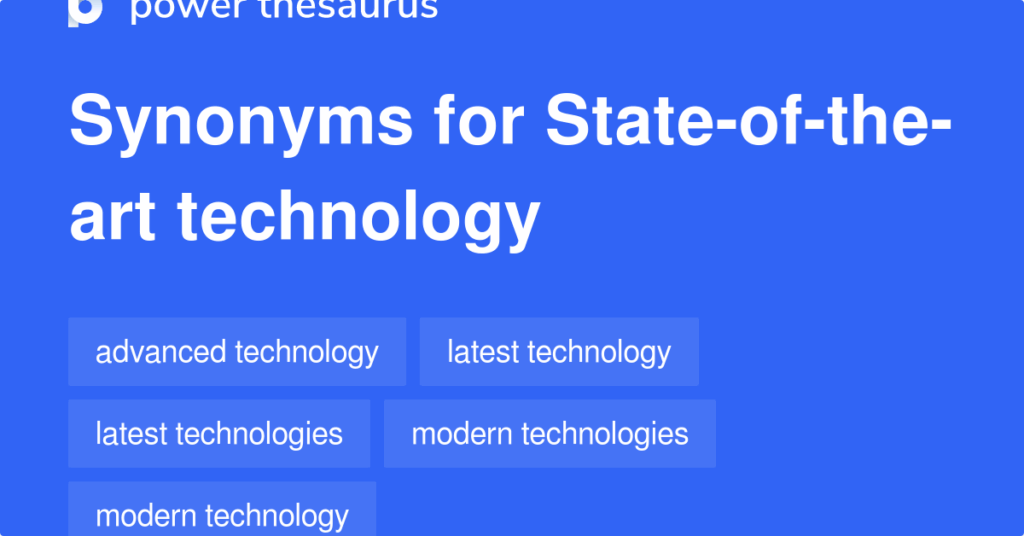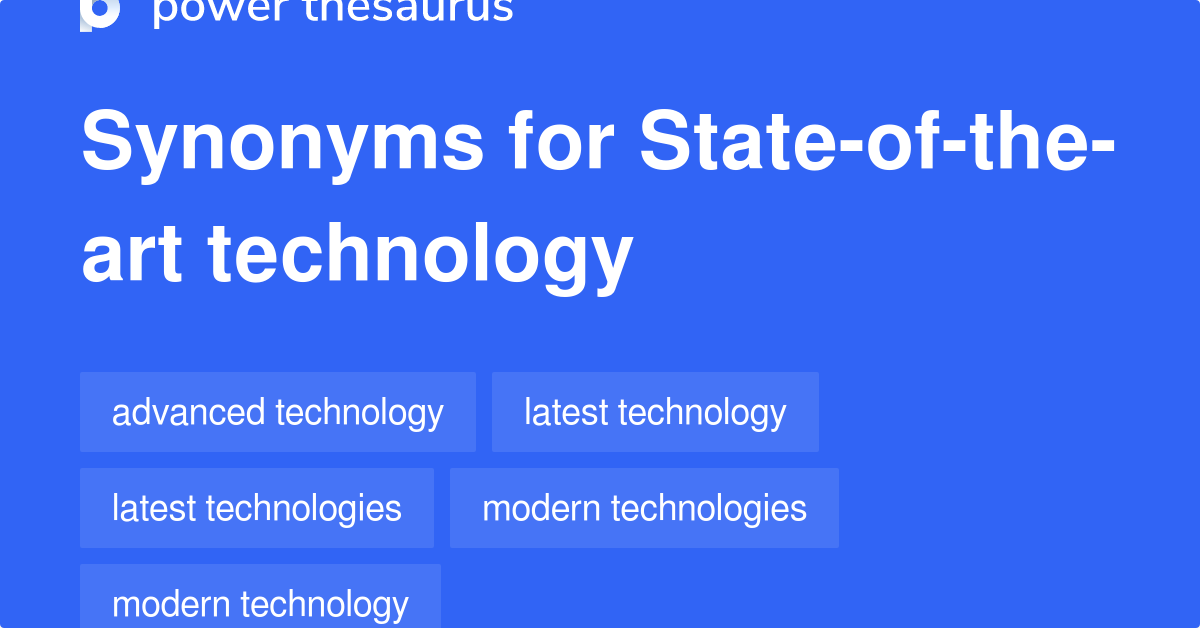
Decoding State-of-the-Art Technology: A Comprehensive Guide
In today’s rapidly evolving technological landscape, the term “state-of-the-art technology” is frequently used, often without a clear understanding of its true meaning. This article aims to provide a comprehensive overview of what state-of-the-art technology entails, its significance, and its impact across various industries. Understanding state-of-the-art technology is crucial for businesses and individuals alike to remain competitive and informed. We’ll explore examples, discuss its limitations, and consider its future trajectory. What precisely makes a technology ‘state-of-the-art‘? It’s more than just being new; it represents the pinnacle of current technological achievement.
Defining State-of-the-Art Technology
State-of-the-art technology refers to the highest level of development of a device, technique, or scientific field achieved at a particular time. It represents the most advanced and innovative solutions available, pushing the boundaries of what is currently possible. This isn’t necessarily the newest technology, but the most refined and effective application of current knowledge. The key characteristics often include superior performance, enhanced efficiency, and innovative features that set it apart from existing solutions. Think of it as the gold standard against which other technologies are measured.
Key Attributes of State-of-the-Art Technology
- Innovation: It introduces novel approaches and solutions to existing problems.
- Performance: It offers significantly improved performance metrics compared to its predecessors.
- Efficiency: It optimizes resource utilization, reducing waste and improving productivity.
- Integration: It seamlessly integrates with existing systems and infrastructure.
- Scalability: It can be easily scaled to meet growing demands and evolving needs.
Examples of State-of-the-Art Technology Across Industries
State-of-the-art technology is not confined to a single sector; it permeates various industries, driving innovation and transforming business operations. Here are a few examples:
Artificial Intelligence and Machine Learning
Advancements in AI and Machine Learning (ML) are revolutionizing industries from healthcare to finance. Sophisticated algorithms can now analyze vast datasets, predict trends, and automate complex tasks. Examples include:
- Natural Language Processing (NLP): Enabling machines to understand and respond to human language.
- Computer Vision: Allowing machines to “see” and interpret images and videos.
- Predictive Analytics: Forecasting future outcomes based on historical data.
Biotechnology and Healthcare
Biotechnology is at the forefront of medical advancements, offering new diagnostic tools and treatment options. State-of-the-art technology in this field includes:
- CRISPR Gene Editing: Precisely targeting and modifying genes to treat genetic diseases.
- Personalized Medicine: Tailoring treatments to individual patients based on their genetic makeup.
- Robotic Surgery: Enhancing surgical precision and minimizing invasiveness.
Renewable Energy
As the world transitions towards sustainable energy sources, state-of-the-art technology plays a crucial role in improving efficiency and reducing environmental impact. Examples include:
- High-Efficiency Solar Panels: Converting sunlight into electricity with greater efficiency.
- Advanced Battery Storage: Storing excess energy for later use, improving grid stability.
- Smart Grids: Optimizing energy distribution and reducing transmission losses.
Manufacturing and Automation
The manufacturing sector is undergoing a significant transformation with the adoption of automation and robotics. State-of-the-art technology in this area includes:
- 3D Printing (Additive Manufacturing): Creating complex objects layer by layer, reducing waste and enabling customization.
- Robotic Process Automation (RPA): Automating repetitive tasks, freeing up human workers for more strategic activities.
- Industrial Internet of Things (IIoT): Connecting machines and devices to collect data and optimize performance.
Communication and Information Technology
Advancements in communication and IT continue to shape how we interact and access information. Key examples of state-of-the-art technology are:
- 5G Technology: Providing faster and more reliable wireless communication.
- Quantum Computing: Harnessing the principles of quantum mechanics to solve complex problems.
- Blockchain Technology: Securing and verifying transactions in a decentralized manner.
The Significance of State-of-the-Art Technology
Investing in state-of-the-art technology offers numerous benefits for businesses and individuals. These include:
- Increased Efficiency: Streamlining processes and reducing operational costs.
- Improved Productivity: Enabling employees to accomplish more in less time.
- Enhanced Competitiveness: Differentiating products and services from competitors.
- Better Decision-Making: Providing access to real-time data and insights.
- Greater Innovation: Fostering a culture of experimentation and creativity.
For businesses, adopting state-of-the-art technology can lead to a significant competitive advantage. It allows them to offer superior products and services, improve customer satisfaction, and attract top talent. Moreover, it can help them adapt to changing market conditions and stay ahead of the curve.
Challenges and Limitations
While state-of-the-art technology offers tremendous potential, it also presents certain challenges and limitations:
- High Costs: Implementing and maintaining advanced technologies can be expensive.
- Complexity: Requires specialized knowledge and skills to operate and manage.
- Integration Issues: Integrating new technologies with existing systems can be challenging.
- Security Risks: Advanced technologies can be vulnerable to cyberattacks.
- Ethical Concerns: Raises ethical questions about privacy, bias, and job displacement.
Organizations must carefully weigh the benefits and risks before investing in state-of-the-art technology. A well-defined strategy, adequate training, and robust security measures are essential for successful implementation. [See also: Cybersecurity Best Practices for Modern Businesses]
The Future of State-of-the-Art Technology
The future of state-of-the-art technology is bright, with ongoing advancements promising to transform our lives in profound ways. Emerging trends include:
- Quantum Computing: Solving complex problems that are currently intractable for classical computers.
- Nanotechnology: Manipulating matter at the atomic and molecular level to create new materials and devices.
- Bioprinting: Creating functional human tissues and organs for transplantation.
- Space Exploration: Developing advanced technologies for exploring and colonizing other planets.
As technology continues to evolve, it is crucial to stay informed and adapt to new developments. Continuous learning, collaboration, and a willingness to embrace change are essential for navigating the future of state-of-the-art technology. The term itself will undoubtedly be redefined as new innovations emerge, pushing the boundaries of what we consider possible. Staying abreast of these advancements is key to leveraging their potential and mitigating their risks. [See also: Future of Work: Adapting to Technological Advancements]
Conclusion
State-of-the-art technology represents the pinnacle of current technological achievement, driving innovation and transforming industries across the board. While it offers numerous benefits, it also presents certain challenges that must be carefully considered. By understanding its key attributes, exploring its applications, and addressing its limitations, businesses and individuals can harness the power of state-of-the-art technology to achieve their goals and shape a better future. Embracing innovation and staying informed are crucial for navigating the ever-evolving technological landscape. The quest for state-of-the-art technology is ongoing, and its continued development promises to unlock new possibilities and address some of the world’s most pressing challenges. What was once considered state-of-the-art quickly becomes commonplace, emphasizing the importance of continuous innovation and adaptation. This ongoing cycle of improvement is what drives progress and shapes the future of technology. The impact of state-of-the-art technology is undeniable, and its potential to transform our world is limitless. It is our responsibility to harness its power responsibly and ethically, ensuring that it benefits all of humanity. The pursuit of state-of-the-art technology is a journey, not a destination, and it requires a commitment to continuous learning, collaboration, and innovation.

